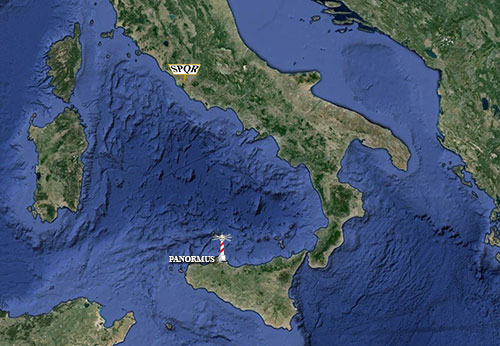
Palermo in the northwest of Sicily was called Panormus in Roman times. The name comes from the Greek and means ‘complete port’. In 20 BC it became a colony of Rome, Colonia Augusta Panormitanorum.
Not much has been written about the Imperial period. The city received military colonists under Vespasian and under Hadrian. The ancient city probably occupied the site immediately around the port, but there are no means of tracing its topography: all ancient remains have disappeared, or are covered by modern buildings. The only ancient remains now visible at Palermo are some slight vestiges of an amphitheatre near the Royal Palace, but numerous inscriptions, as well as fragments of sculpture and other objects of antiquity, have been discovered on the site, and are preserved in the museum at Palermo. Important mosaics were discovered at Piazza della Vittoria. In Terracina a funeral inscription from the first century BC was found set up by the cives Romani in Sicilia Panhormi qui negotiantur, "the Roman citizens of Panormus in Sicily who trade".
See also:
- Roberto Piperno's pages about Palermo.
- A movie about the Roman villa at Piazza della Vittoria by the Associazione Culturale Sikeliotes.






 We are committed to providing versions of our articles and interviews in several languages, but our first language is English.
We are committed to providing versions of our articles and interviews in several languages, but our first language is English.